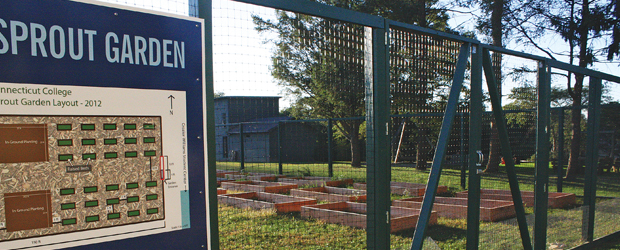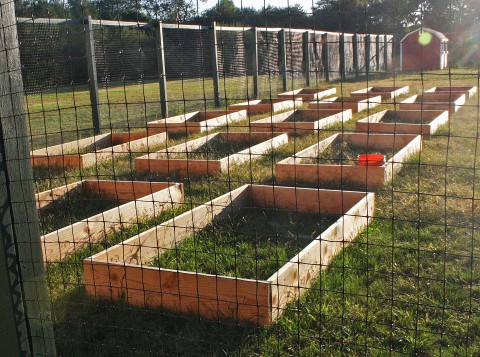At Connecticut College sustainability means more than making the college environmentally friendly or simply implementing solar panels everywhere. Here, sustainability is about finding solutions to problems that encompass environmental, social and economic interests.
Thanks to the Student Sustainability Grant Program launched by President Higdon last fall, many student initiatives have come to fruition.
The grant has most recently funded the creation of a new organization, Community Organizers for Sustainability Transformation, or COST. The program is one year old and was started by Josh Stoffel, the sustainability manager at Conn. According to the COST program manager Genevieve Harding ’13 , the group’s goals are to create campaigns and events to bring to campus that are around an in-depth theme related to sustainability.
One of the COST initiatives is the question of consumption and helping Conn students realize how much waste they are producing. “Hopefully by the end of the unit, dorms can come together and do something with consumption. This movement could create awareness about how much trash students create and how much can be recycled,” said one COST rep after the first meeting,
One way of increasing student awareness, for example, is by purchasing transparent trashcans and recycle bins in all the dorms and public areas on campus. This way, waste is physically more visible.
The grant program has also funded improvements to the Sprout Garden, which will soon be relocated to a new and more visible space behind Cro. These changes were also funded by the Bennack-Polan Foundation and contributions from President Higdon.
In addition, the campus has seen a recent push in favor of wind power. According to SGA Chair of Environmental Affairs, Molly Conlin ’13, “Students have initiated a feasibility study investigating the possibility of hosting a substantial wind power source on campus. I have seen a lot of positive support for this and other initiatives that are in the works.”
It is true that there is a lot of support for sustainable initiative on campus; however, just like in any situation, there is always pushback. “It’s the 20-60-20 situation. Twenty people who are really supportive and want to really help. Sixty who are neutral and will help if it’s convenient. And then twenty people who are just against it,” Stoffel said.
Botany professor Chad Jones also agrees, “There is pushback and reluctance to get things done, people want to take things slowly and think through it. This is good to some extent, but in the end you lose the excitement.”
Nevertheless, the college continues to make progress on permanent projects that do fulfill the sustainable goals on campus. “The biggest thing is the New London Hall and athletic center implementing geothermal energy. It’s only the past few years that I’ve seen those types of things incorporated into the buildings,” said Jones. “There has been an increased recognition.”
According to Stoffel, although sustainability has become more important at the college, it is vital to know that sustainability is about bridging gaps and breaking down barriers between the environment and social and economic problems. Students are eager to get involved in this coalescing and campus-wide progress, as shown by the joint statement of COST and SGA, who expressed their desire to, “Integrate sustainability into the campus culture, it’s [a cause] that everyone should be involved with.”
Dedication to environmental stewardship is also a tenet of SGA’s Issues Project for this year.
“I believe we are fortunate to have an environmentally minded campus that cares deeply about these issues and is enthusiastic to learn more about their importance.” said Conlin. •










